 W
WAugust Annist was an Estonian literary and folklore scholar, writer and translator.
 W
WHerbert Lorentz Brede was an Estonian soldier and general.
 W
WPeter Eugen Arthur Baron von Buxhoeveden was a Baltic-German military colonel who served in the forces of the Imperial Russian Army and Estonia.
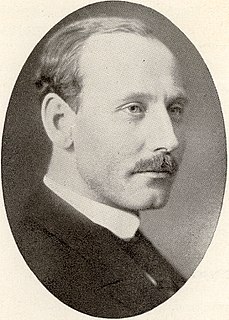 W
WKaarel Eenpalu was an Estonian journalist, politician and head of state, who served as 7th Prime Minister of Estonia.
 W
WAugust Gailit was an Estonian writer.
 W
WOtto Heinze VR I/2, VR II/3 was an Estonian military commander during the Estonian War of Independence.
 W
WAnton Irv VR I/2, VR II/2, VR II/3 was a highly decorated Estonian combat soldier and military officer during World War I and in the Estonian War of Independence.
 W
WAleksander Jaakson was an Estonian general and educator. After beginnings as a teacher in Türi, he served with the Imperial Russian Army in World War I, and was advanced to Staff Captain. During the disintegration of the Russian Republic in 1917, he returned home to establish a branch of the Estonian Defence League. He was a decorated participant in the Estonian War of Independence and later continued serving in the Estonian Defence Forces in various positions, including military education.
 W
WGustav Jonson was an Estonian military soldier of the Russian Empire, Estonia, and the Soviet Union.
 W
WHans Kalm was an Estonian soldier who served in the armies of Russian Empire, Finland and Estonia. He was also a homeopath and naturopath who took interest in alternative medicine.
 W
WJaan Kalviste was an Estonian chemist, mineralogist, educator, and translator.
 W
WHugo Eduard Kauler was an Estonian General.
 W
WAlbert Kivikas was an Estonian writer and journalist. He is best known as the author of the book Names in Marble, the subject of which is the Estonian War of Independence.
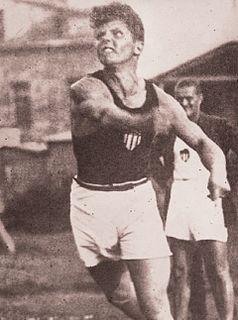 W
WAleksander Klumberg was an Estonian decathlete. He competed in several events at the 1920 and 1924 Olympics and won a bronze medal in the decathlon in 1924. In 1922 he became the first official world record holder in the decathlon, albeit with a performance inferior to the Stockholm 1912 series of Jim Thorpe.
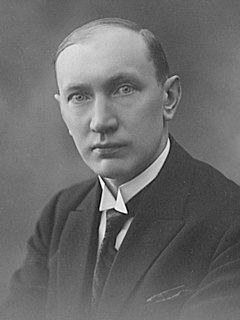 W
WPaul Nikolai Kogerman was an Estonian chemist and founder of modern research in oil shale.
 W
WJakob Kukk was an Estonian prelate who served as the first bishop of the independent Estonian Evangelical Lutheran Church.
 W
WBoris Kumm was an Estonian communist politician.
 W
WJulius Kuperjanov VR I/2, VR II/2 and VR II/3 was an Estonian military officer during the War of Independence and commander of the Tartumaa Partisan Battalion renamed after him posthumously.
 W
WAnts Kurvits or Hans Kurvits was an Estonian military commander, reaching rank of major general. He participated in the Estonian War of Independence and later became the founder and long-time leader of the Estonian Border Guard. Kurvits also served briefly as Minister of War.
 W
WJohan Laidoner was an Estonian kindral (general) and statesman. He served as Commander‑in‑Chief of the Estonian Armed Forces during the Estonian War of Independence and was among the most influential people in Estonian history between the world wars.
 W
WAndres Larka VR I/1 was an Estonian military commander during the Estonian War of Independence and a politician.
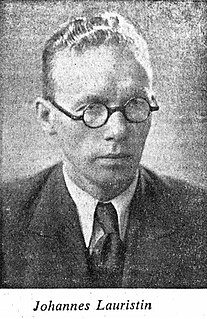 W
WJohannes Lauristin was an Estonian communist politician, activist, writer and statesman who served as the first Chairman of the Council of People's Commissars of the Estonian Soviet Socialist Republic. Hs wife was communist politician Olga Lauristin and his daughter was politician Marju Lauristin.
 W
WHans Leesment was an Estonian General. From 1919 up until 1940, he was the president of the Estonian Red Cross. On February 24, 1933, he was promoted to the rank of Major General.
 W
WJaan Lepp was an Estonian track and field athlete, and military Lieutenant Colonel.
 W
WOskar Loorits was an Estonian folklorist.
 W
WArtur Lossmann was an Estonian military personnel (Major-General). He was one of the most prominent military medicine specialist in Estonia.
 W
WTheodor Luts was an Estonian film director and cinematographer, brother of classic writer Oskar Luts. Theodor Luts was the first major figure of Estonian cinematography
 W
WJaan Maide, VR II/3 was a senior Estonian Army officer who fought in World War I, the Estonian War of Independence and World War II. He was appointed Commander-in-Chief of the Estonian Military by Otto Tief's government in 1944.
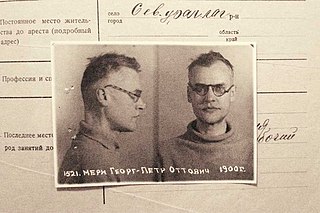 W
WGeorg-Peeter Meri was an Estonian diplomat, literary scholar and translator.
 W
WHarri Moora was an Estonian archaeologist. He was a recipient of the national Cross of Liberty.
 W
WJohannes Orasmaa, until 1935 Johannes Roska was an Estonian General.
 W
WAnton Õunapuu VR II/3 was an Estonian PE teacher and the founder of the Boy Scouts movement in Estonia.
 W
WKarl Pärsimägi was an Estonian Fauvist painter.
 W
WKarl Parts VR I/1, VR II/2, VR II/3 was an Estonian military commander during the Estonian War of Independence.
 W
WJohan Pitka, VR I/1, was an Estonian entrepreneur, sea captain and a rear admiral (1919). He was the Commander of the Estonian Navy in the Estonian War of Independence.
 W
WErnst-Johannes Põdder VR I/1 was a famous Estonian military commander in the Estonian War of Independence.
 W
WTheodor Pool was an Estonian politician, agronomist and writer. He was a member of I, II, III and IV Riigikogu.
 W
WViktor Puskar VR I/1 was an Estonian military commander (Colonel) during the Estonian War of Independence.
 W
WNikolai Reek VR I/2, VR II/2, VR II/3 was the Estonian military commander during the Estonian War of Independence.
 W
WRudolf Johannes Reimann was an Estonian military Major General . He is considered to be the founder of Estonia's military logistics.
 W
WKarl Selter was an Estonian politician and a Minister of Foreign Affairs of Estonia. He served as Minister of Economic Affairs from 1933 to 1938 and as minister of Foreign affairs from 1938 to 1939. His historically most memorable act was to sign a non-aggression and mutual assistance treaty with the Soviet leaders in Moscow in September 1939. This was also his personal and national Estonian most tragic act. It followed a brutal ultimatum from the Soviet Foreign Minister, Vyacheslav Molotov on 24 September. Molotov said to Setler: Estonia gained sovereignty when the Soviet Union was powerless, but you “don’t think that this can last… forever… The Soviet Union is now a great power whose interests need to be taken into consideration. I tell you—the Soviet Union needs enlargement of her security guarantee system; for this purpose she needs an exit to the Baltic Sea … I ask you, do not compel us to use force against Estonia.” The enforced in this manner treaty gave the Soviet army a right to set up military bases in Estonia, and it significantly reduced Estonia's independence until Estonia was formally incorporated into the Soviet Union between June and August 1940. Selter left Estonia in November 1939, resigning both as Foreign Minister and as a member of Parliament. He moved to Geneva, Switzerland as a diplomat. After Germany occupied Estonia between 1941 and 1944, and after it was re-incorporated into the Soviet Union in 1944, he stayed in Switzerland as an exiled diplomat and politician.
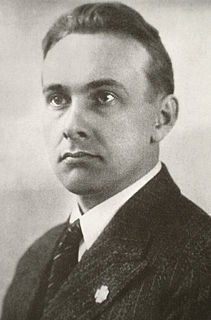 W
WArtur Sirk was an Estonian political and military figure. A veteran of the country's struggle for independence Sirk later became a leading figure within the right-wing Vaps Movement and an outspoken opponent of the government.
 W
WJaan Soots was an Estonian military commander during the Estonian War of Independence and politician.
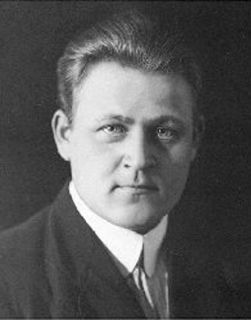 W
WHarald Tammer was an Estonian journalist, athlete and weightlifter. As a heavyweight weightlifter he won a world title in 1922 and a bronze medal at the 1924 Olympics. As an athlete he competed in the shot put at the 1920 and 1924 Olympics and came sixth and twelfth, respectively. He served as the Olympic flag bearer for Estonia in 1920, and as a representative of the Estonian Olympic team in 1928 and 1936.
 W
WOtto Tief was an Estonian politician, military commander, and a lawyer.
 W
WBalder Tomasberg was an Estonian artist.
 W
WAleksander Tõnisson VR I/1 was an Estonian military commander during the Estonian War of Independence.
 W
WLeopold Tõnson was an Estonian military personnel and sport personnel.
 W
WJohan Unt was an Estonian military major general.
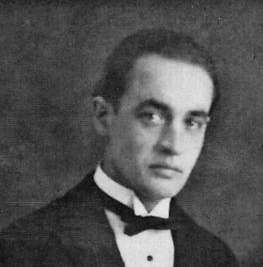 W
WKuno Veeber was an Estonian painter and graphic artist whose career began in the late 1910s.
 W
WAleksander Warma VR I/3 was an Estonian navy officer, diplomat and painter.
 W
WJakob Westholm was an Estonian educator and politician. He was a member of the I, II, III and IV Riigikogu.